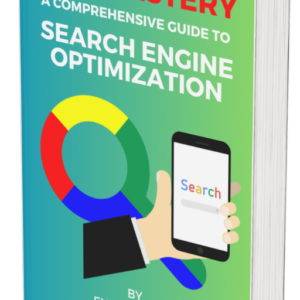When it comes to running profitable eCommerce campaigns in 2025, few tools are as essential as Google Merchant Center.
This platform does more than just list your products—it connects your catalog to Google Shopping Ads, enhances your product visibility, and directly influences how potential buyers discover and engage with your store.
Yet, despite its importance, most advertisers only scratch the surface of what’s possible.
That’s where knowing the right Google Merchant Center tricks becomes a game-changer.
In a competitive landscape where small optimizations can translate into massive sales gains, learning these proven strategies is no longer optional.
It’s the difference between staying visible and getting buried by competitors. The good news? You don’t need enterprise-level resources to unlock better results.
By applying a few powerful tweaks, you can optimize feeds, improve ad rankings, and ultimately drive more conversions at a lower cost.
Why Google Merchant Center Matters More Than Ever in 2025

Google Merchant Center (GMC) is no longer just a backend tool where retailers upload product feeds.
In 2025, it has evolved into a powerful hub connecting eCommerce stores with Google’s search, shopping, and advertising ecosystem.
With rising customer acquisition costs and intense competition in online retail, optimizing your GMC account isn’t optional—it’s a must.
The way your product data is structured, how fast your feeds update, and how you manage disapprovals directly impacts whether your ads appear in competitive auctions or get buried beneath rivals.
Retailers that treat GMC as a passive feed uploader typically face wasted ad spend, low-quality impressions, and frequent policy violations.
On the other hand, businesses that consistently refine their feed with structured optimizations achieve better click-through rates (CTR), higher conversion rates, and lower cost per acquisition (CPA).
According to Google, product data quality is one of the top factors influencing whether your listings qualify for premium placements like Shopping ads and free listings.
The competitive landscape is only getting tighter.
That means the fight for visibility is fiercer than ever, and advertisers who know how to unlock hidden advantages inside GMC are the ones staying ahead.
This is where mastering Google Merchant Center tricks comes in.
By applying strategic adjustments across your feed setup, product data, and account health, you can gain a real edge.
#1. Master Feed Optimization for Maximum Visibility
The heart of GMC is your product feed. A poorly optimized feed results in irrelevant impressions, low-quality clicks, and wasted spend.
Product titles and descriptions are the most significant areas where optimization pays off.
Google’s algorithm scans your titles to determine relevance to search queries, and the more structured and keyword-rich (without stuffing) they are, the more likely your products will appear in competitive auctions.
For instance, a product listed as “Running Shoes” is far too generic. Instead, a better feed entry would be “Nike Air Zoom Running Shoes – Men’s Size 10 – Lightweight, Breathable.”
This approach includes brand, product type, attributes, and intended audience, all of which improve visibility.
Google Ads Help highlights that descriptive, attribute-rich titles can boost impressions by as much as 20%.
Descriptions also play a vital role. Instead of generic filler text, include unique selling points, specifications, and value propositions.
A well-crafted description not only satisfies algorithmic requirements but also improves user trust when they see the product in Shopping results.
Adding high-quality images, multiple views, and lifestyle shots can further enhance engagement and CTR.
One of the most overlooked Google Merchant Center tricks is aligning feed data with actual on-site content.
If your landing page and product feed don’t match in attributes like color, size, or price, Google flags it as a mismatch.
Keeping feeds updated in near real-time, especially if you run flash sales or frequently change inventory, ensures better compliance and reduces disapprovals.
#2. Fixing Disapprovals Before They Drain Performance
Policy disapprovals are one of the biggest headaches for eCommerce advertisers.
When products are disapproved, they stop serving in ads altogether, sometimes without the advertiser realizing it until performance metrics dip.
Common causes include mismatched prices, incorrect GTINs, misleading descriptions, and policy violations around restricted items.
The first step is to regularly check the Diagnostics tab in GMC. This section highlights products with issues, whether they’re disapproved, under review, or have warnings.
A quick response is critical. Leaving disapproved items unresolved not only impacts visibility but can also affect your account’s overall trust level.
Among the most effective Google Merchant Center tricks is setting up automatic alerts for feed errors.
By integrating your Merchant Center account with Google Ads and using automated rules, you can ensure you get notified immediately when products are flagged.
This allows you to correct feed data quickly, reducing downtime.
In 2025, Google has tightened enforcement around accuracy. For example, even small discrepancies in currency display or shipping details can lead to suspensions.
To avoid repeated disapprovals, always verify your structured data markup on product pages using the Rich Results Test tool.
This ensures product schema aligns with your feed, preventing unnecessary policy violations.
Ultimately, advertisers who dedicate time to cleaning and monitoring their feeds experience higher approval rates and spend less time firefighting disapprovals.
#3. Using Supplemental Feeds to Enrich Product Data
Not every retailer has a perfect product catalog ready for Google’s standards. This is where supplemental feeds come into play.
They allow you to add missing attributes or override incorrect information without touching your primary feed.
For instance, if your main feed doesn’t include custom labels for seasonal promotions, you can create a supplemental feed to add them.
Similarly, you can adjust titles for specific campaigns—like appending “Holiday Sale” or “Free Shipping”—without having to overhaul your entire product database.
This flexibility makes supplemental feeds one of the most powerful Google Merchant Center tricks.
Instead of waiting on your developer team to edit the core product data in your CMS, you can push updates through GMC quickly.
This is especially useful for large retailers managing thousands of SKUs.
Another benefit is testing. Suppose you want to test whether adding material attributes (e.g., “cotton,” “leather”) improves CTR.
Rather than editing your entire feed, you can use supplemental feeds to trial the change on a subset of products.
This approach minimizes risk while providing valuable insights.
The combination of primary and supplemental feeds creates a more dynamic, campaign-ready product catalog that aligns with real-time promotions, keyword targeting, and seasonal demand shifts.
#4. Leveraging Custom Labels for Smarter Bidding
Google Shopping campaigns rely heavily on structured bidding strategies, and one of the most underrated tools in this area is custom labels.
These allow you to categorize products beyond Google’s standard attributes, creating a more tailored bidding approach.
For example, you might create custom labels for profit margins—low, medium, and high.
This allows you to bid more aggressively on high-margin items while scaling back on low-margin ones.
Another use case is labeling products by seasonality. If you run a fashion store, tagging items as “Summer Collection” or “Winter Clearance” helps you adjust bids according to demand cycles.
One of the essential Google Merchant Center tricks is using custom labels for product performance segmentation.
You can create labels based on best-sellers, slow movers, or promotional items.
With this setup, your bidding becomes more granular, ensuring budget flows to the products most likely to convert.
Custom labels also integrate seamlessly with Performance Max campaigns.
By applying smart segmentation, you provide Google with clearer signals about which products deserve higher exposure, ultimately improving ROAS.
#5. Automating Updates with Scheduled Fetch and API Integration

Outdated product data is a silent budget killer. If your feed doesn’t update frequently, you risk running ads for out-of-stock items, leading to wasted clicks and frustrated customers. Inaccurate prices can even result in account suspension.
The solution lies in automation. GMC allows for scheduled fetches, where product feeds automatically update at set intervals.
For businesses with constantly changing catalogs, syncing feeds multiple times per day is essential.
For enterprise retailers, API integration offers even greater control. Through the Content API for Shopping, product data can sync directly between your eCommerce platform and GMC in real time.
This eliminates the manual hassle of uploading feeds and ensures that inventory, pricing, and availability always reflect live data.
Among the more advanced Google Merchant Center tricks is setting up conditional updates.
For example, you can create rules that automatically pause advertising for products with low stock levels, avoiding overselling.
Similarly, you can update prices in real time during flash sales, ensuring compliance and better performance.
Automation not only reduces errors but also frees up your team to focus on higher-level strategy rather than data entry.
#6. Enhancing Trust with Product Reviews and Ratings
Shoppers trust peer reviews more than brand claims, and Google knows this.
That’s why products with star ratings and reviews typically receive higher CTRs. In fact, according to BrightLocal, 77% of consumers “always” or “regularly” read reviews before making a purchase.
To enable product ratings in GMC, you’ll need to integrate with approved review aggregators or directly submit review feeds.
Once activated, your products can display average star ratings and review counts in Shopping results.
This is one of the Google Merchant Center tricks that builds credibility instantly.
When a potential buyer sees a 4.8-star average next to your listing, they’re far more likely to click through than on a competitor with no visible ratings.
Importantly, review feeds must remain authentic and policy-compliant. Fake or manipulated reviews can lead to disapprovals and damage brand trust.
The most effective approach is to encourage verified buyers to leave reviews by offering simple post-purchase reminders and incentives.
In competitive verticals like electronics or apparel, review visibility can be the deciding factor between a click and a pass.
#7. Optimizing for Free Listings in Google Surfaces
While Shopping ads require paid campaigns, free product listings—available through Google Surfaces—offer organic visibility that complements paid strategies.
These listings appear on Google Search, Shopping, and even YouTube when users browse relevant products.
Optimizing for free listings follows the same principles as paid campaigns: clean titles, detailed descriptions, and accurate product attributes.
However, many advertisers ignore free listings because they assume they deliver little traffic. In reality, free listings can account for a significant portion of visibility, especially for smaller retailers with limited ad budgets.
One of the clever Google Merchant Center tricks is treating free listings as a testing ground.
By monitoring CTR and conversion rates from these placements, you can identify which products perform best organically.
Those insights can then inform where to invest more aggressively in paid campaigns.
Free listings also provide coverage for products you don’t actively advertise. This ensures your entire catalog has some degree of visibility, even if only a fraction is boosted through paid ads.
#8. Strengthening Policy Compliance with Feed Rules
Feed rules are an underutilized feature in GMC that allow advertisers to transform or enrich data without editing the original feed file.
For example, if your titles don’t include brand names, you can set up a feed rule to automatically prepend the brand to each product.
This flexibility makes feed rules one of the most practical Google Merchant Center tricks for staying compliant.
Suppose your pricing feed lacks currency indicators. Instead of re-uploading the feed, you can create a rule to append “USD” or “EUR” to the price field.
Feed rules also help maintain consistency across large catalogs.
If you discover that Google is misinterpreting product categories, you can set rules to assign the correct taxonomy.
This reduces misclassification, which can otherwise lead to irrelevant impressions.
In fast-paced retail environments, feed rules function as a safeguard, ensuring your data stays clean and compliant even if your core system isn’t perfect.
#9. Unlocking Insights with Merchant Center Reports
Google Merchant Center isn’t just about pushing data out—it also pulls valuable insights back in.
The Reports tab offers granular performance data, including impressions, clicks, CTR, and benchmark metrics.
Advertisers often rely solely on Google Ads reports, but GMC reports provide product-level insights that reveal hidden optimization opportunities.
For example, you may discover that a specific product variant—like a color or size—is receiving far higher CTRs than others. This insight allows you to prioritize that variant in your campaigns.
One of the smarter Google Merchant Center tricks is combining report insights with custom labels.
By cross-referencing performance data with labels such as “high margin” or “seasonal,” you can fine-tune bidding strategies for better efficiency.
Reports also include competitive visibility benchmarks, showing how your products stack up against competitors in terms of impression share.
This helps guide decisions around pricing, promotions, and bidding aggressiveness.
When used consistently, Merchant Center reports become a roadmap for continuous improvement, guiding where to allocate resources for maximum ROI.

#10. Preparing for AI-Driven Future Integrations
AI is reshaping every aspect of digital advertising, and GMC is no exception. In 2025, Google is increasingly integrating AI-driven recommendations directly into Merchant Center accounts.
These include automated suggestions for feed improvements, pricing adjustments, and promotional opportunities.
Advertisers who embrace these recommendations often gain a performance edge.
For example, Google may suggest refining product titles with specific attributes it knows drive higher engagement based on marketplace trends.
It may also highlight products that would benefit from promotions during seasonal spikes.
One of the forward-looking Google Merchant Center tricks is leveraging AI insights without becoming over-reliant on automation.
While Google’s recommendations are useful, they must be balanced with business-specific priorities such as margin goals and inventory levels.
AI also plays a growing role in detecting policy issues.
Machine learning models are increasingly flagging products for potential violations even before they’re submitted, allowing advertisers to preemptively adjust.
By preparing for deeper AI integrations, advertisers ensure their GMC setups remain agile, competitive, and aligned with broader shifts in the digital advertising ecosystem.
Conclusion
Google Merchant Center has become a mission-critical platform for eCommerce advertisers in 2025. It’s no longer enough to simply upload a feed and run campaigns.
Success requires ongoing optimization across feed quality, compliance, automation, and reporting.
By applying these ten strategies—from mastering feed optimization and supplemental feeds to embracing AI-driven insights—you position your business to thrive in a competitive market.
Each of these Google Merchant Center tricks contributes to stronger visibility, higher CTRs, lower CPAs, and ultimately more profitable campaigns.
Retailers who dedicate time to GMC optimization consistently outperform those who treat it as an afterthought.
In 2025, that gap is only widening. If your goal is sustainable growth and efficient advertising, there’s no better time to refine your approach and put these tricks into action.










